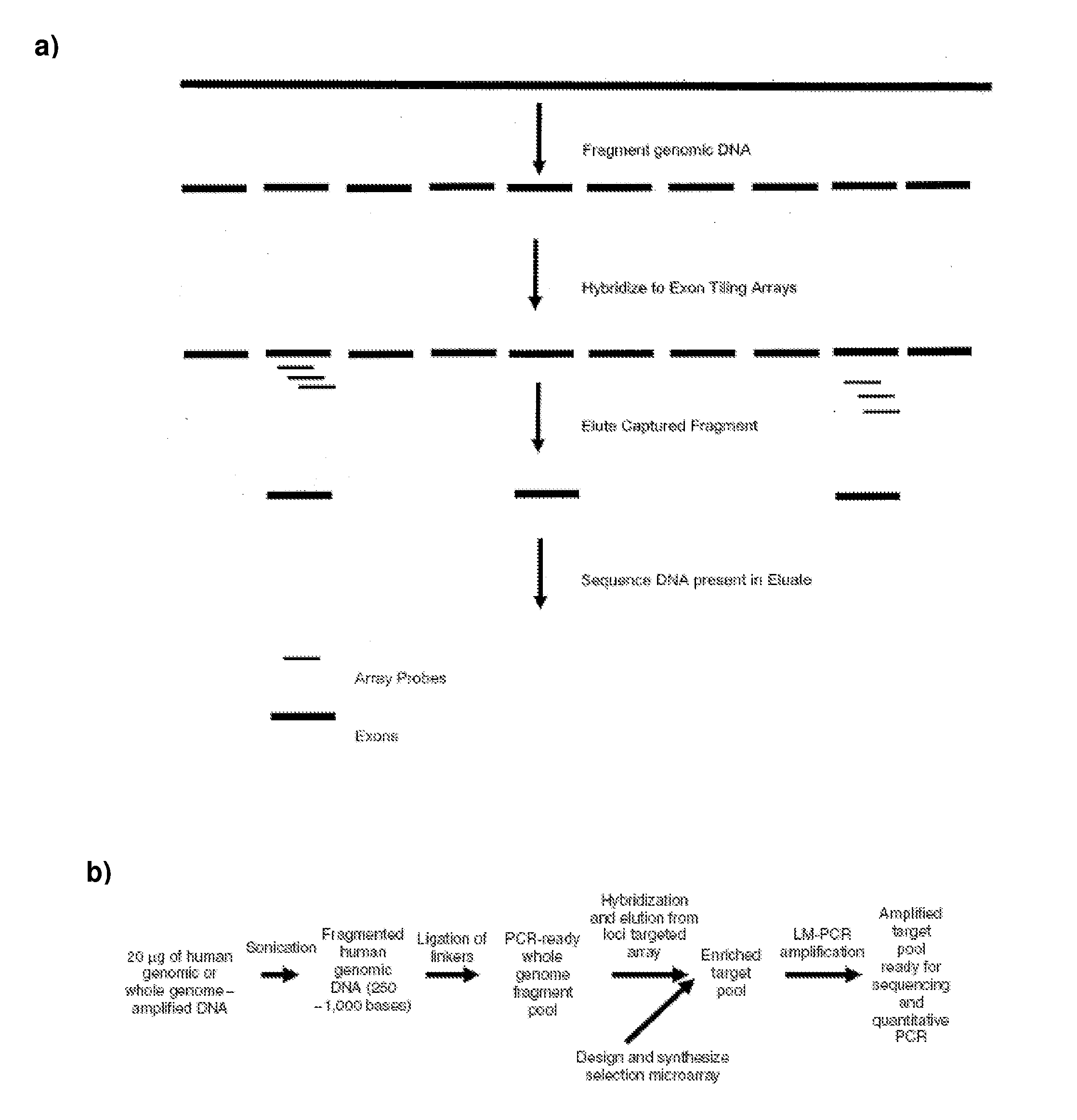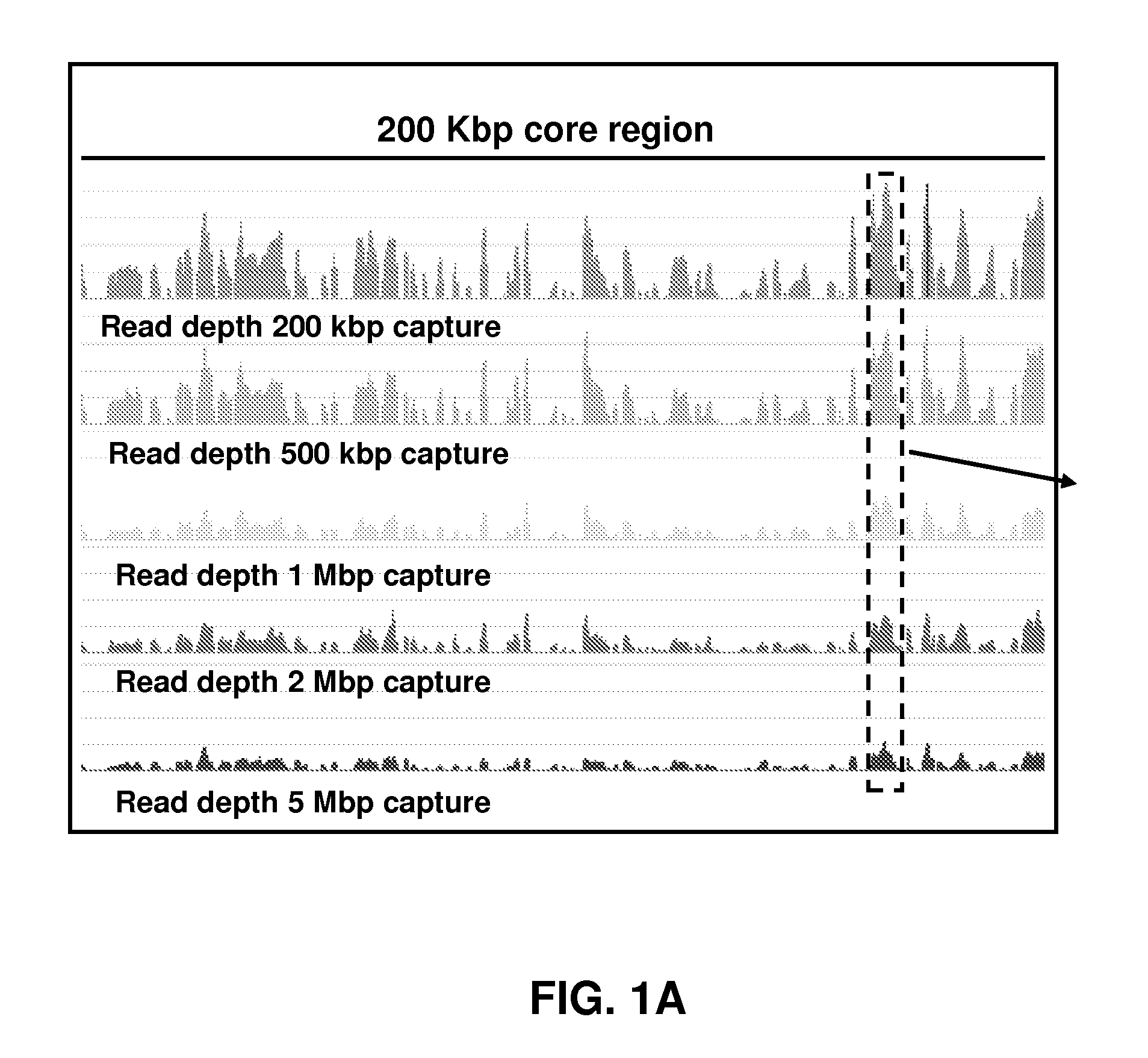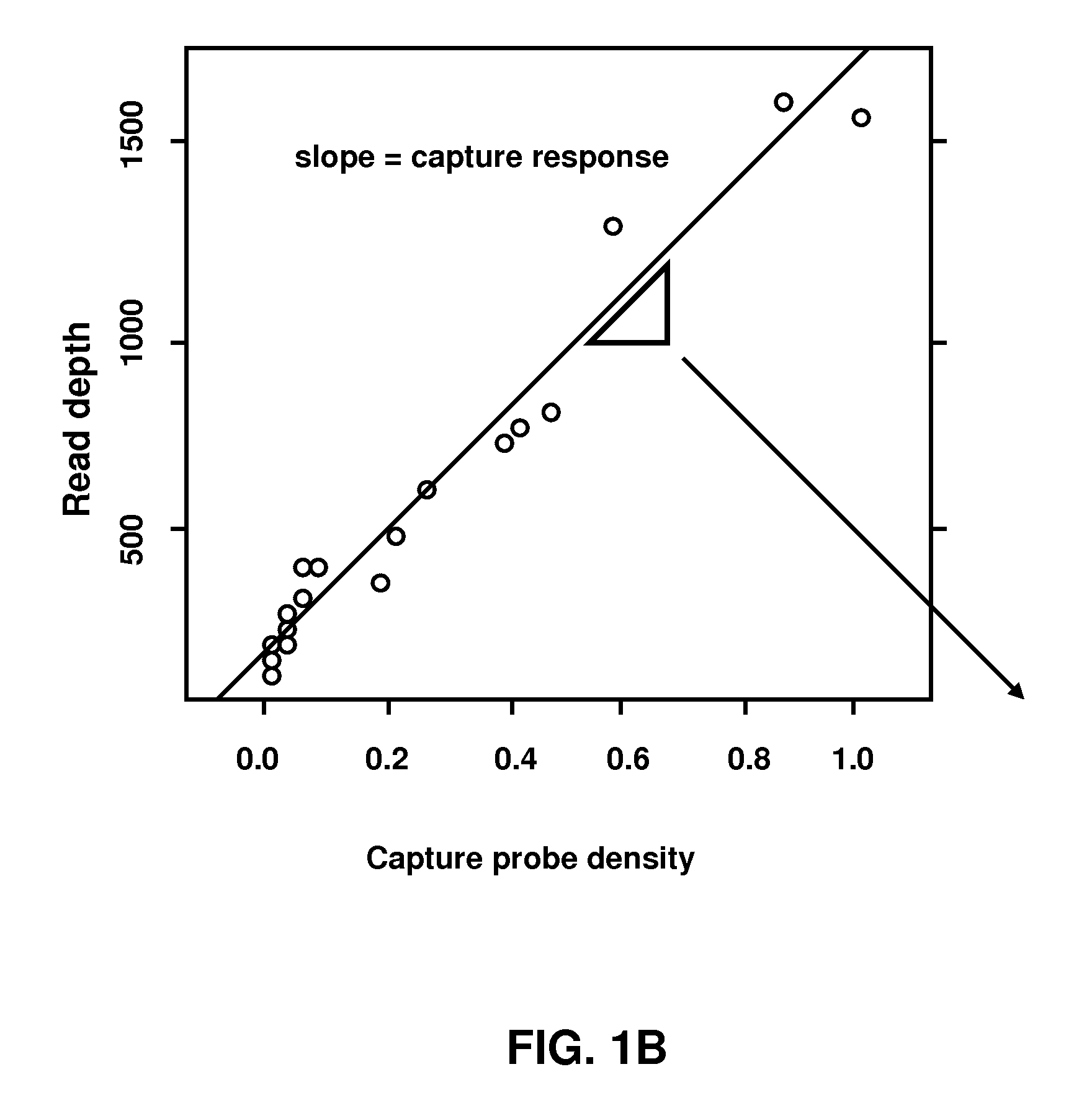Methods and systems for uniform enrichment of genomic regions
a technology of genomic regions and compositions, applied in the field of methods and compositions for the enrichment of target nucleic acids in a microarray system, to achieve the effect of facilitating further processing and genetic analysis, and reducing the complexity of samples
- Summary
- Abstract
- Description
- Claims
- Application Information
AI Technical Summary
Benefits of technology
Problems solved by technology
Method used
Image
Examples
example 1
Initial Capture Array Design
[0088]Five sequence capture microarrays were designed that targeted nested regions of decreasing extents (5 Mbp, 2 Mbp, 1 Mbp, 500 Kbp, and 200 Kbp), each approximately centered on the coordinate chr17:38490539. A common database of probe sequences with median length 75 bp and capable of synthesis in no more than 188 cycles was created (NimbleGen, Madison Wis.). Each capture design was composed of no more than 385,000 probes selected from this database at the closest possible probe coordinate spacing within the respective genomic interval. Because the array capacity exceeded the number of unique probes in the targeted interval on the 200 Kbp and 500 Kbp designs, each probe was replicated eight and four times on those arrays, respectively.
example 2
Sample Preparation and Microarray Capture
[0089]Purified genomic DNA (Burkitt's lymphoma cell line, ATCC #NA04671) was purchased from the Coriell Institute for Medical Research (Coriell Cell Repositories, Camden N.J.) and amplified using a Qiagen Whole Genome Amplification Kit (Hilden, Germany). Following amplification, 20 μg of DNA was sonicated, yielding an average size of 500 bp fragments. The fragments were treated with the Klenow fragment of DNA polymerase I (New England Biolabs, Beverly Mass.) generating blunt-ends, and then 5′ phosphorylated with polynucleotide kinase (New England Biolabs) following established protocols. Synthetic oligonucleotides linkers 5′-Pi-GAGGATCCAGAATTCTCGAGTT-3′ (SEQ ID NO: 1) and 5′-CTCGAGAATTCTGGATCCTC-3′ (SEQ ID NO: 2) were annealed and ligated to the ends of the fragmented genomic DNA. The linker adapted genomic DNA fragments were hybridized to capture microarrays in the presence of 1× NimbleGen hybridization buffer (NimbleGen) for approximately 6...
example 3
Sequencing and Sequence Data Processing
[0090]Linkers compatible with 454 sequencing (454, Branford CT) were ligated to the captured, eluted DNA fragments. The resulting fragments were amplified on beads using emulsion PCR (emPCR) and sequenced using the 454 sequencing instrument, following manufacturer's protocols. As each sequenced fragment contained the 20 bp linker for the LM-PCR, the majority of 454 sequencing reads comprised this linker sequence.
[0091]Standard quality filtering and base-calling functions of the 454 instrument were applied to yield sequence reads and corresponding quality scores. Adapter and sequencing primer sequences were removed from sequence reads. Prior to mapping reads to the human genome assembly hg18, repetitive portions of each read likely to map non-uniquely (e.g., align with high identity to multiple, disparate locations in the genome) were masked using WindowMasker (Morgulis et al., 2006, Bioinformatics 22:134-41; incorporated herein by reference in ...
PUM
| Property | Measurement | Unit |
|---|---|---|
| Tm | aaaaa | aaaaa |
| thermal melting point | aaaaa | aaaaa |
| pH | aaaaa | aaaaa |
Abstract
Description
Claims
Application Information
 Login to View More
Login to View More - R&D
- Intellectual Property
- Life Sciences
- Materials
- Tech Scout
- Unparalleled Data Quality
- Higher Quality Content
- 60% Fewer Hallucinations
Browse by: Latest US Patents, China's latest patents, Technical Efficacy Thesaurus, Application Domain, Technology Topic, Popular Technical Reports.
© 2025 PatSnap. All rights reserved.Legal|Privacy policy|Modern Slavery Act Transparency Statement|Sitemap|About US| Contact US: help@patsnap.com



